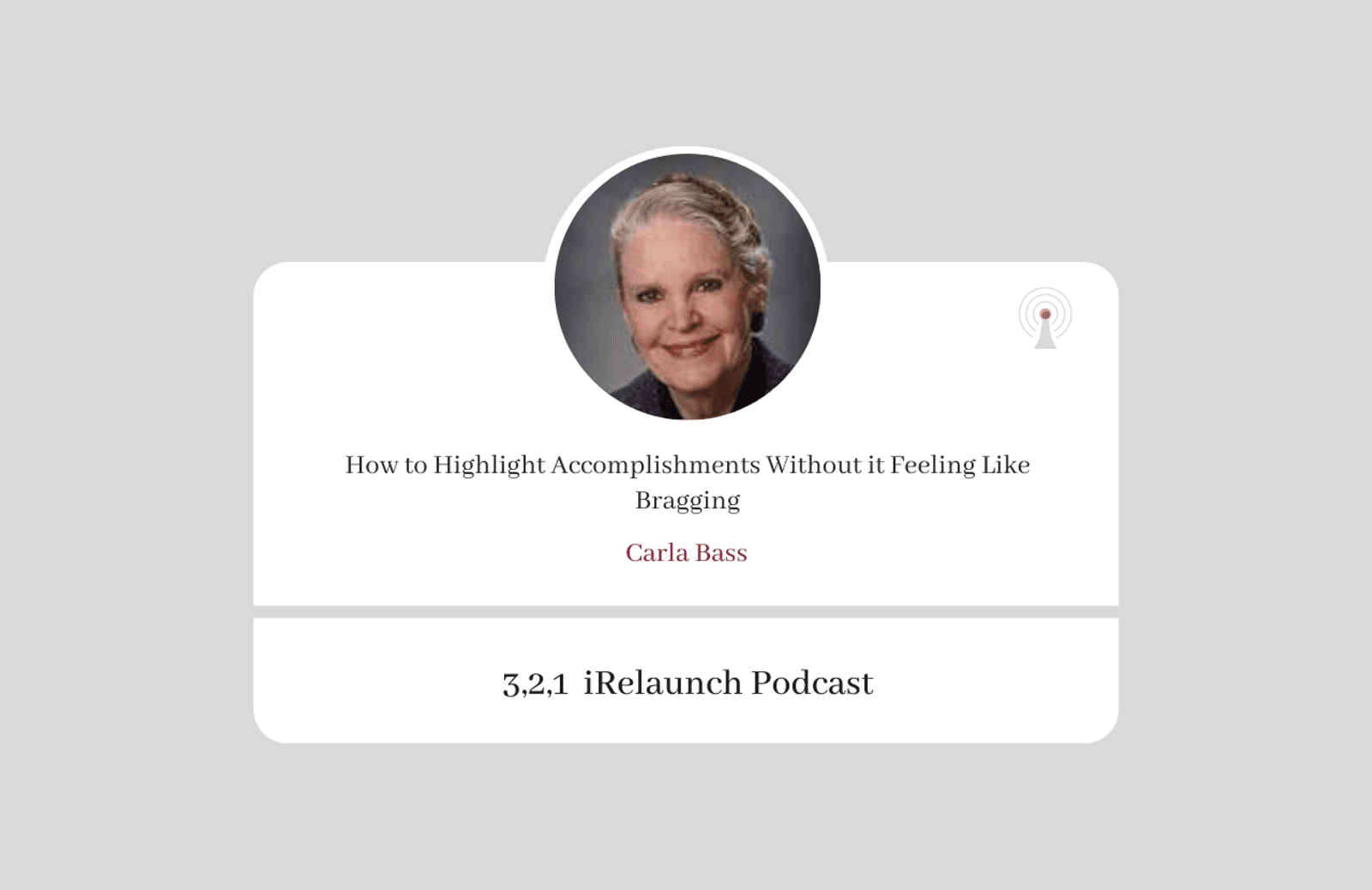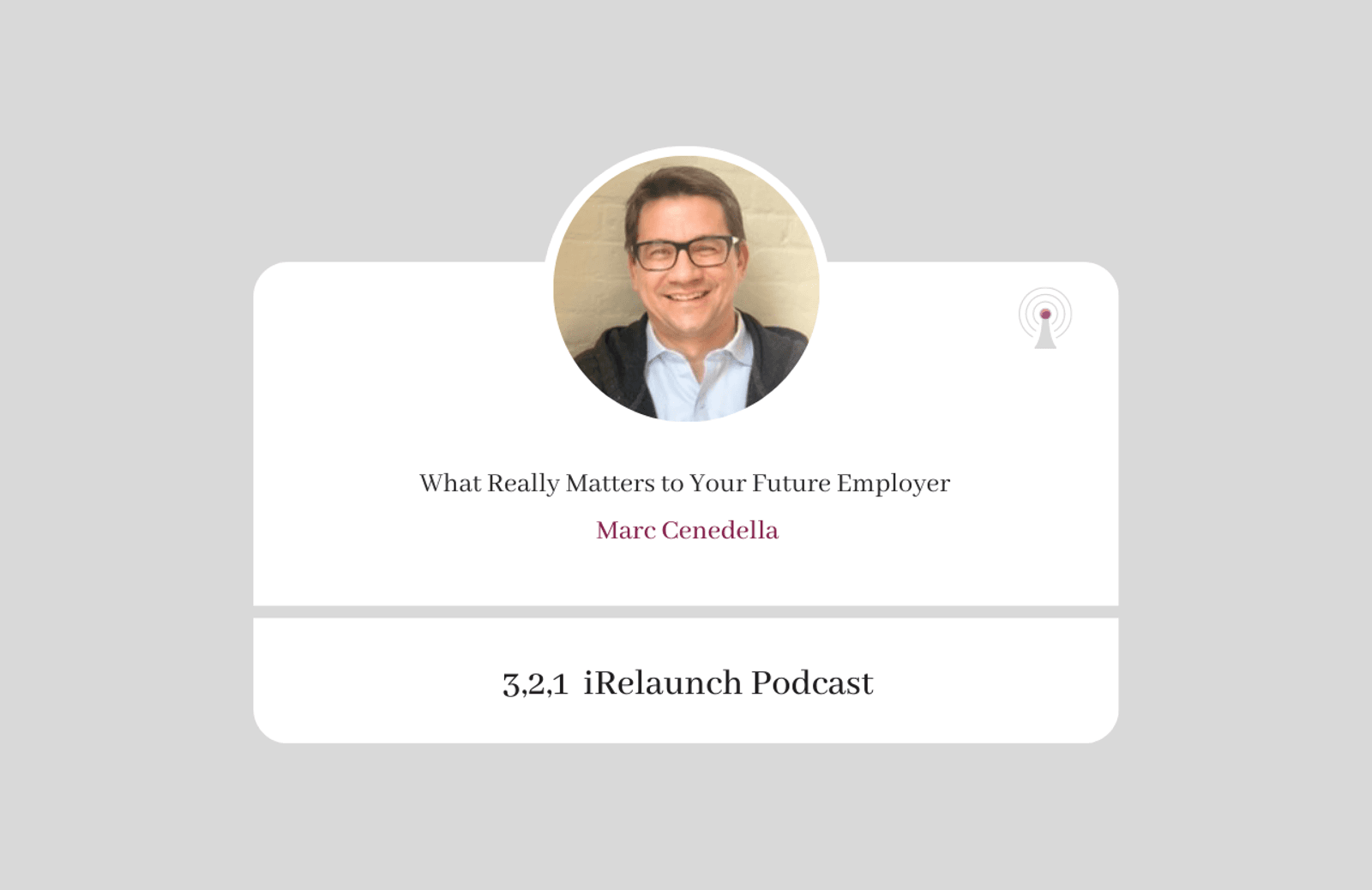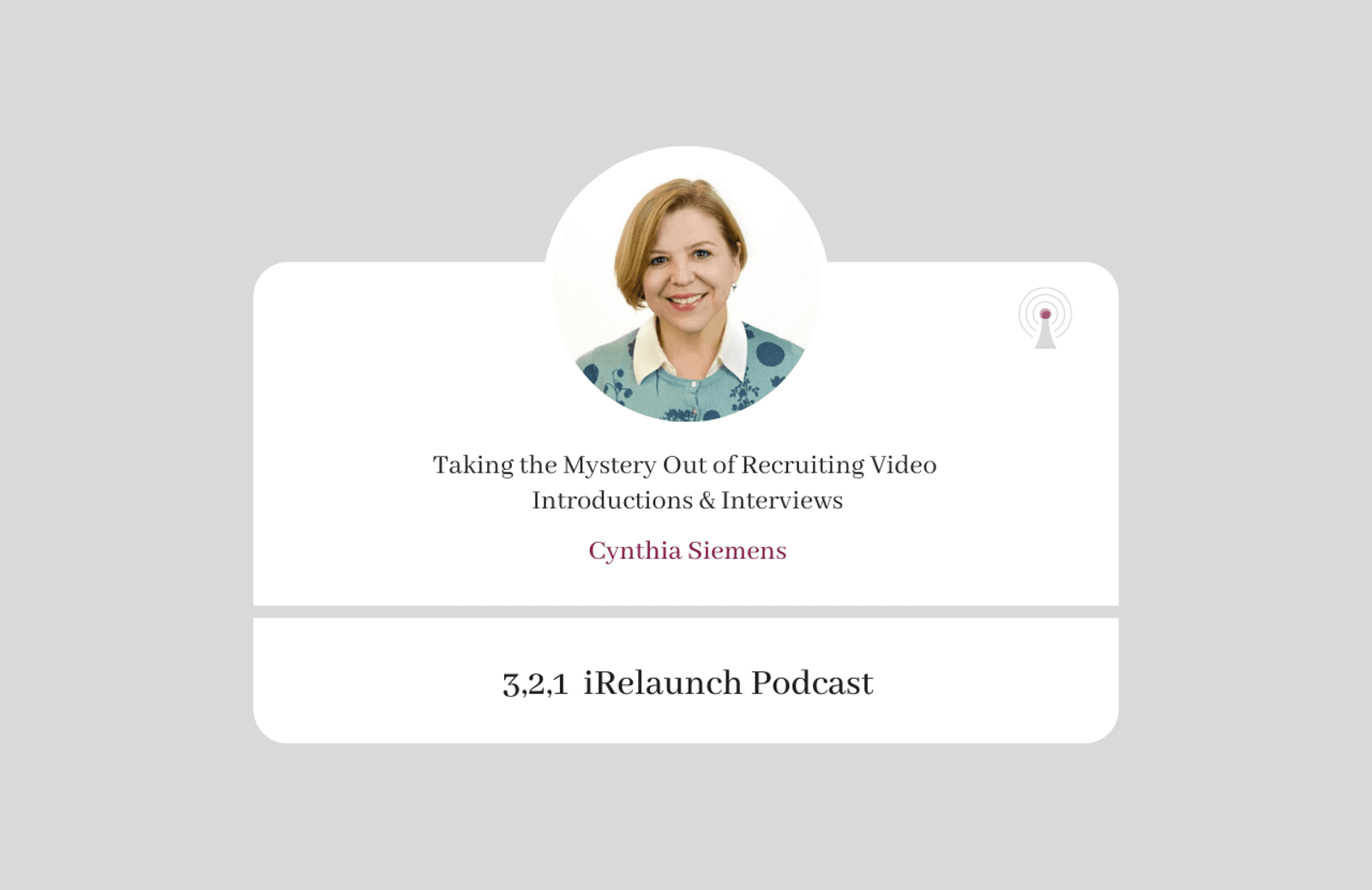
Luck is what happens when preparation meets opportunity
Don't rely on the "Luck of the Irish" alone during your relaunch.
I write this on St. Patrick’s Day, a day associated with luck and happenstance, with tricks and serendipity. Despite my ancestral inclination to place all faith in the Luck of the Irish, when it comes to a job search…it’s not wise to rely on luck alone to accomplish your career goals.
There’s truth in this famous quote...when it comes to luck, preparation and opportunity are critical components that must occur in tandem, especially when the objective is a successful job search.
Preparing the Pitch
I’ll continue to draw on my own experience and use my saga of pitching myself to iRelaunch’s leadership to frame how preparation was of paramount importance in my approach and ultimate success in seizing my desired opportunity.
From a job-seeker’s perspective, I was in an unorthodox position. The job I wanted didn’t yet exist! I couldn’t prepare the way a job seeker would for an interview, although I certainly recognized there were elements that may be reminiscent of an interview. I realized that in order to create the job I wanted, my communication had to include a “sales pitch”.
As I laid the plans to prepare my double sales pitch (both the need for the role and why I was the right person for the job), I found the advice from the podcast episode with Carla Bass, author of Write to Influence (affiliate link) extremely useful.
“The cardinal rule in any communication is...know your audience. So the first step here would be to do your homework on the company to which you’re wanting to apply. Learn what its goals, its mission, its values, identify its products, its customers and its history. Learn everything you can about that particular company. “
I took this advice to heart and not only learned about the company, but made sure I knew personal anecdotes about those I anticipated I would speak with so I could relate on a more personal level. For example, I learned that our CEO at the time, Jill Kravez had a previous venture establishing a boutique chain of nail salons and was a sucker for beauty products and licorice allsorts (both of which came in handy to break the ice as we discussed the merits of our favorite nail polish brands and when it was time to send a follow-up thank you note, accompanied by a small gift of licorice!)
Carla suggests that the next step to do is to take “an inventory of yourself - identify what your skills are, your experiences and your background, and then you play ‘The Great Match Game.’ You draw as many correlations as possible between the needs that that organization is expressing in a job posting and your qualifications and background using the keywords wherever possible to make those ties.”
Without a job posting and keywords to reference, I backed my way into a version of “The Great Match Game” where I started with my personal inventory and thought about what kinds of problems I was good at solving and what types of projects I enjoyed doing and tried identify the opportunities for iRelaunch based on my outside perspective that matched up with the problems and projects I knew I could solve.
Once I had determined the thesis I wanted to convey, I reviewed the language of my elevator pitch to ensure I wasn’t diminishing or diluting the points of my pitch by using weak language. The podcast on using powerful language and its effect when you’re relaunching with Julie Holunga proved to be a great resource in preparing and refining my pitch. I made sure I was deliberate with the words I chose, that I used strong vocabulary and conveyed conviction and confidence through “I know” and “I am confident that,” statements instead of the overused and undermining statements of “I believe” or “I think.”
For the meeting itself, preparation took the form of practicing. Following the advice imparted at the iRelaunch RTW conference and resources, I joined Toastmasters to prepare and practice my public speaking, construction of a narrative, confidence and pitching. I wrote out my thoughts, synthesized to the key points I wanted to convey. I recorded myself on my voice memos on my phone and listened to myself the same way one might listen to a podcast, critiquing and making adjustments to tighten the message with each listen, with each practice session. The goal was to practice so I felt comfortable enough with the content and the different paths the conversation could take, but not overly-rehearsed that the conversation felt too stilted.
Preparing the Request for Time
While I prepared my pitch, I simultaneously tagged and saved articles and resources I encountered in my research, especially those on the external environment and business opportunities I felt would pique the interest of Carol or others at iRelaunch. I documented these of course, with the intent of laying the groundwork to request a meeting with her when I felt prepared enough to do so.
I wanted to be sure that my request felt natural and reasonable based on the ongoing rapport I worked to develop with Carol, and not something out of left field or something to cause alarm or suspicion. I also purposefully wanted to keep myself “fresh in her mind” and build my personal brand with her as someone who provided thoughtful, helpful value through our relationship.
This is a common strategy one might consider to set oneself apart when you’re following up after a job interview that you’re waiting to hear back from. In the book Never Eat Alone (affiliate link), by Keith Ferrazzi, he discusses the strategic importance of information and how it can lose “its value so quickly that it makes more sense to trade it than to hoard it, so bankable information is free flowing, gushing online. Learn to tap its value, and you’re as privileged as the people who can open all the right doors.”
Ferazzi takes this concept a step further and dubs this process of information gathering and management as “The Fringe.” Meant to describe the strategy in which one structures and curates their online network (and social feeds) to deliver people, information, and opportunities that are completely specific to them and what they’re working on (read: or what might be valuable or interesting to someone you’re trying to impress!)
Preparing and sending these resources in anticipation of my meeting request, and by keeping these lines of communication open afforded me an easier entrée into her schedule when I eventually requested a meeting with her to “discuss an idea I wanted to pitch her.”
If you’re interviewing with a company without a return to work program, or perhaps you’re in the same situation as I was - approaching a company without any open positions trying to persuade them to take a chance on you and to give you a job that doesn’t yet exist, one important thing to keep top of mind is the mindset of the company or the individual you’re speaking with.
Whether right or not, there’s a likelihood that there may be varying degrees of reluctance on the part of the interviewer. In order to overcome this reluctance before it turns into an outright objection, one needs to come prepared to make a strong fact-based business case (and not a personal plea). If you’re approaching a company without any job postings, you have to remember that there may be a level of defensiveness as they could be approaching the conversation from the position of “we are just not in hiring mode.”
Marc Cendella offers up some great insight in the podcast “What Really Matters to Your Future Employer.” Marc reminds us that the relauncher “has to think about what the person who’s ultimately going to hire them is looking for...the elevator pitch really needs to be focused on how you’re bringing your passion to a set of problems that could be relevant to that future boss.”
Similarly, in the episode with Carla Bass, she encourages relaunchers to “communicate from the position of empathy. Look at this from the employer’s perspective. What capabilities do you have to fill their needs? The company, by definition identified a hole in its capabilities when they put out that job posting, so explain how you, through your capabilities, can help them further their mission. There’s a big difference between, ‘hey, hire me because I’ve got all these great skills,’ as opposed to ‘I recognize your need and I can help you by…’ and then fill in the blanks.”
Preparing the Environment
While the hardest and most time consuming parts of preparing are in developing and refining your pitch and perfecting the ask, I’d be remiss if I didn’t review the final area that needs preparation: the environment in which you’ll deliver it!
More than likely, this will still be a video conference where you and your background will be on display. Prior to my meeting, I made sure to set up my environment the way you would for an important video call or phone interview - in essence because I was expecting to ensure it became one!
Here are some common tips for preparing your environment:
- Background: This was still long enough ago that Zoom backgrounds had not been popularized, so I made sure the background was neat and tidy. Whether you choose a Zoom background or not, make sure your background reflects the personal brand you want to convey.
- Sitting or Standing? Decisions, decisions! If you have the option to stand, it’s an option worth considering. Standing tends to keep energy high and help with projection and posture.
- Lighting: Don’t miss an opportunity to convey your enthusiasm and excitement through well lit body language and facial expressions! Make sure your light source comes from in front of you and not behind so you’re not back-lit. Consider purchasing a ring light (affiliate link) if you anticipate having multiple interviews (or future Zoom meetings once you land the role!)
- Appearance: Make sure you dress in something that makes you feel confident, uniquely you and appropriate for the personal brand you want to convey with the interview or pitch that you’re about to make. It’s a good idea to test it out on the screen before because some outfits may look great in person but fall flat (or be too distracting) once on camera.
- Camera: You want to be just like Goldilocks with the camera - not too far away, not too close...usually about 18-24 inches away from the camera (an easy way to test this is to extend your arms to reach the keyboard in a natural typing position without stretching). Make sure you’re centered in the shot and rehearse a few answers while looking directly at the camera lens or webcam on your laptop and not looking at the video of the person you’re speaking with as this is the “next best option” for direct eye contact.
- Settings: Test your video conference setup, internet, and audio connections in advance to be sure there are no surprises or delays when you’re ready to join. You may choose to have your resume, the job description or some major talking points or examples taped up within eye-shot (but try not let your eye contact break too far or too often). At iRelaunch, we are a fan of these nifty page holders (affiliate link) - available in lots of different colors!
- Noisy Neighbors: This one’s a no-brainer, but make sure barking pets are sequestered, children are otherwise entertained (although there have been some encouraging reports of more empathy and recognition of the reality of family life as interviewers have encountered unwitting young ones since the pandemic has blurred the lines between work and family life). For older kids, consider an “I’m on air” sign on the door so there are no knocks or interruptions.
- Other: Get a nice tall glass of water for you to sip on so you’re not parched halfway through your well-prepared talking points. Turn your cellphone volume and vibrate off, or flip everything to do not disturb.
Finally, one area that is often overlooked in terms of preparation is your mental headspace. There’s likely a fair amount of energy and enthusiasm, and maybe some anxiety and nerves. Approach this from a sense of curiosity and frame your feelings through a lens of excitement and from a growth-mindset perspective. Try to find the sweet spot betweenvisualizing success and having the steps in your rejection plan ready to put into action.
For more great tips on video interviewing, check out the podcast with Cynthia Siemens, the Communication Director for HireVue, a leader in video interviewing and AI-driven video and game-based assessments.
Resources
Books (affiliate links)
- Career Switchers by Dawn Graham
- Never Eat Alone by Keith Ferrazzi
- To Sell is Human by Daniel Pink
- Write to Influence by Carla Bass






